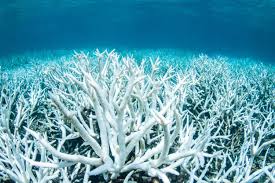Endangered Lives
Climate change is not just altering landscapes; it's driving numerous species toward the brink of
extinction.
Polar Bears & Melting Ice Caps
Polar bears, the Arctic's apex predators, rely heavily on sea ice for hunting, resting, and breeding.
However, as global temperatures rise, Arctic sea ice is forming later in the fall and melting earlier in the
spring, reducing the time polar bears have to hunt for their primary prey—seals. This shift forces them to
spend extended periods on land, where food sources are scarce and typically inadequate for their nutritional
needs. Consequently, polar bear populations are experiencing declining health and reduced survival rates.

Coral Reefs & Ocean Acidification
Coral reefs, often referred to as the "rainforests of the sea," are experiencing widespread bleaching events
due to rising ocean temperatures and increased acidification. When stressed by elevated temperatures, corals
expel the algae living in their tissues, causing them to turn white—a phenomenon known as coral bleaching.
This not only affects the corals themselves but also the vast array of marine life that depends on healthy
reef ecosystems for shelter and food. The degradation of coral reefs threatens marine biodiversity and the
livelihoods of millions who rely on reef-based fisheries and tourism.

Migratory Birds Losing Habitats
Migratory birds are highly attuned to seasonal cues that dictate their migration patterns. Climate change
has disrupted these patterns by altering the timing of seasons, leading to mismatches between migration
schedules and the availability of critical food resources. For instance, if birds arrive at breeding grounds
too early or too late due to shifted seasonal cues, they may find insufficient food supplies, adversely
affecting their reproduction and survival rates. Additionally, changing temperatures and weather patterns
can degrade or eliminate stopover habitats essential for rest and refueling during long migrations.
